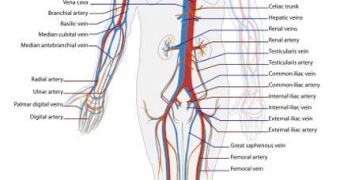Over the past few years, nanomaterials have made it into the “mainstream,” in that they are becoming more and more the natural choice when it comes to constructing devices for a wide range of applications, from better electronics to medical implants. As such, experts are now calling for an assessment of how they will behave when interacting with biological systems, such as humans. Undoubtedly, over the next few decades, most of us will have some form of nanomaterials or another inside our bodies, so we must ensure that they are compatible and that they have no side-effects.
Experts at the University of California in Los Angeles (UCLA) and the California NanoSystems Institute (CNSI) have taken it upon themselves to play a more active role in analyzing this new type of interaction, so as to ensure perfect compatibility, and very low risks of anything going wrong. Writing in the July issue of the journal Nature Materials, the researchers analyze many chemical and physical traits of nanomaterials, as well as their ability to interact with biological systems and bioprocessors.
“What we have established here is a blueprint that will serve to educate the first generation of nanobiologists,” the leader of the scientific collboration, Dr. Andre Nel, explains. He is also the chief of the UCLA David Geffen School of Medicine Division of Nanomedicine, and also of the California NanoSystems Institute. Ironically, while nanomaterial technology has really taken off in the last few years, very little is known about the intracellular activity and function of the engineered particles.
“We are committed to ensuring that nanotechnology is introduced and implemented in a responsible and safe manner. Based on our rapidly improving understanding of nano-bio interactions, we have done a thorough examination of the literature and our own research progress to identify measures that could be taken for safe design of nanomaterials,” the scientist says.
“Not only will this improve the implementation and acceptance of this technology, but it will also provide the cornerstone of developing new and improved nanoscale therapeutic devices, such as drug-delivering nanoparticles,” he adds. Nel is also the Director of the Center for Environmental Implications of Nanotechnology. The institution is funded by the National Science Foundation (NSF) and the US Environmental Protection Agency (EPA).
“Instead of waiting for knowledge to unfold randomly, we can already begin to view the events at nano-bio interface as a discoverable scientific platform that can be used for setting up a deliberate inorganic-organic roadmap to new, better and safer products. What we can identify by understanding the rules that shape the nano-bio interface will have a massive impact on the ability to develop safe nanomaterials in the future,” Nel concludes by saying.

 14 DAY TRIAL //
14 DAY TRIAL //